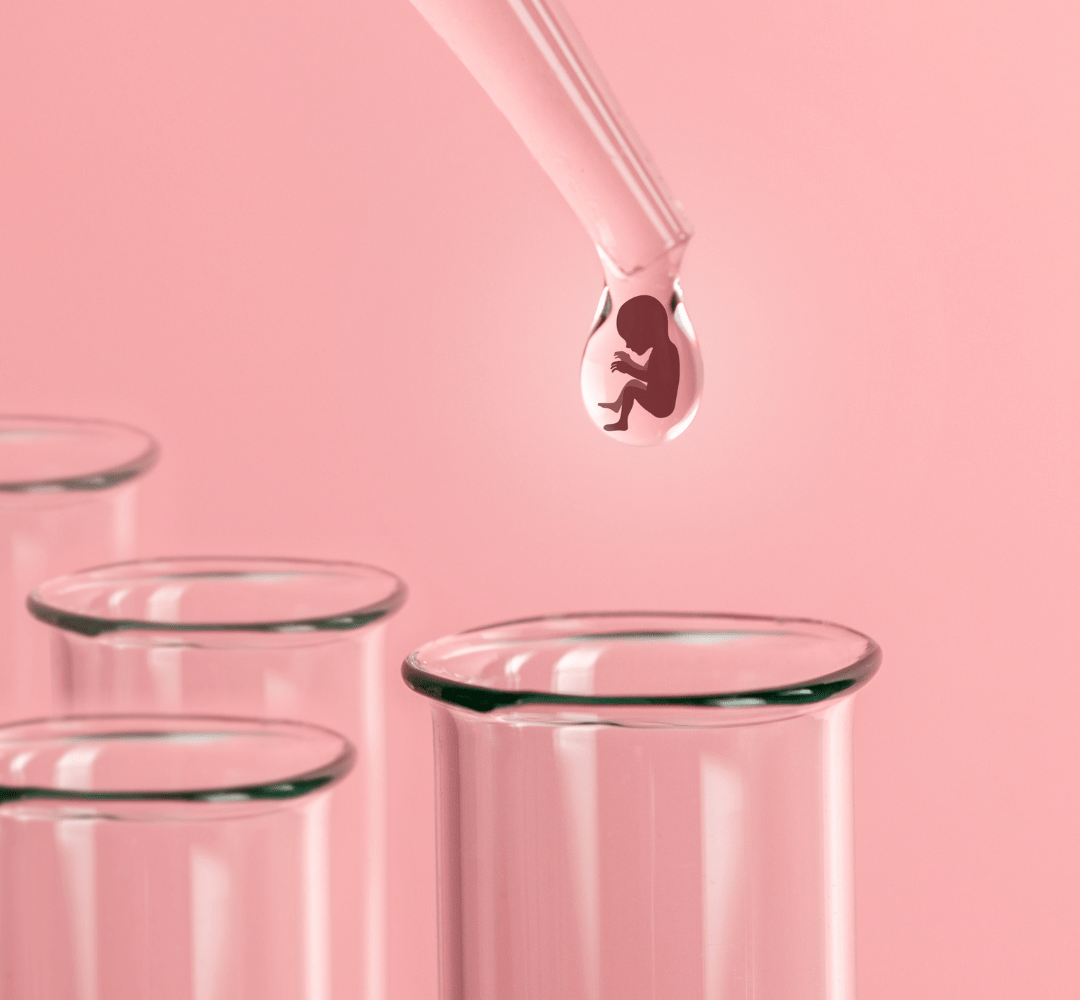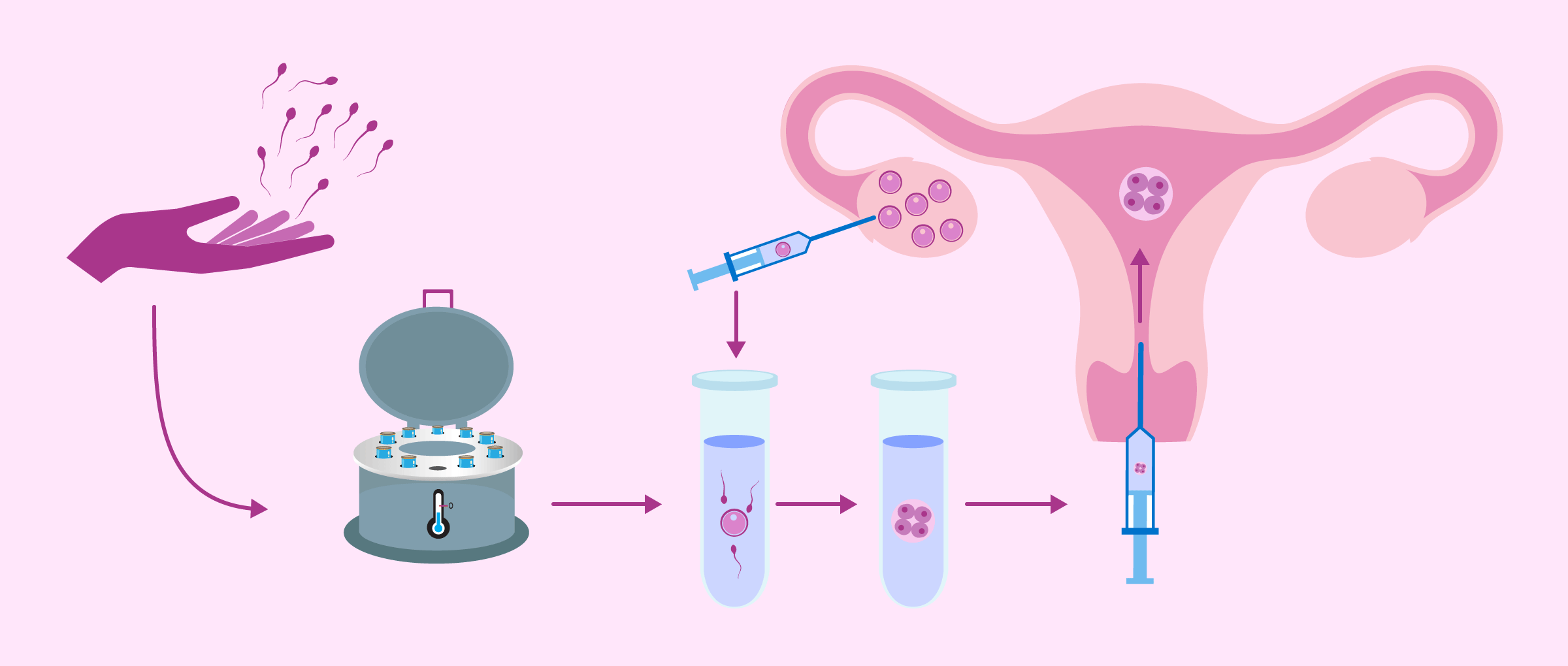
- ABOUT
- TREATMENTS & SERVICES
Male Fertility
Genetics & Family Balancing
- SUCCESS STORIES
- CONTACT
- BLOG
Test tube baby, or In Vitro Fertilization (IVF), is a process in which a human sperm fertilizes a human egg outside the female’s body in a laboratory, assisted by a doctor or embryologist.
When compared to other animals, humans are not a very fertile species. Infertility has long been a concern for humans since ancient times. According to the World Health Organization, one out of six people globally, or around 17 percent of those over the age of 18, will face infertility or subfertility at some point in their lives. The fact that the frequency is similar in high-income and low-income nations shows how widespread infertility is as a worldwide health problem.
The inability to conceive after 12 months or more of consistent, unsecured sexual activity is known as subfertility or infertility. It may damage people’s emotional and psychological health by causing severe anguish, stigma, and economic strain.

There are several steps involved in the test tube baby procedure. Now, let’s discuss it.

Using transvaginal ultrasound guidance, your doctor collects as many eggs as possible from your ovaries through transvaginal ovum pickup (TVOPU). Specialists recommend general anesthesia for this process usually.
Typically, the male partner gives a sample of his semen for sperm collection three to four days after the last ejaculation. Sperm can be extracted straight from the testicles using a variety of methods if the male partner is unable to perform a sample or has a disease such as azoospermia.
Studies and research show that the optimal period for transfer is three to five days after fertilization. At this point, your infertility specialist doctor will transfer one or more high-quality embryos into the uterus. It is a minimally invasive procedure with a short stay at the IVF clinic and does not require general anesthesia.
The next step is taking the pregnancy test, generally two weeks after successfully transferring the embryos. During this time, your doctor may prescribe hormone supplements to aid in the implantation and development of the embryo. If pregnancy is successful, the report will be positive; if not, it might show non-pregnant because your body might not have accepted the embryo. An IVF specialist presents such outcomes and formulates the following strategy based on them.
“In Vitro” means “within the glass” and comes from Latin. It more broadly refers to whatever takes place in a lab environment. Therefore, the expression “in vitro fertilization” refers to fertilization that happens inside a glass tube rather than inside a human body.
After fertilization, the resulting embryo is transferred to the uterus to continue growing. Then, the embryo further develops inside the human body, and the baby born through this process is called a test tube baby. Thus, there aren’t many differences between those two except that the technique is known as in vitro fertilization, and the child born as a consequence is known as a test tube baby.
In a typical IVF procedure, an IVF specialist fertilizes an egg spontaneously by putting thousands of sperm in a lab dish with a mature egg. In contrast, an embryologist using the Intracytoplasmic Sperm Injection (ICSI) technique directly injects one healthy sperm into the egg’s cytoplasm to confirm fertilization. It improves the chances of successful reproduction and fertilization. Following fertilization, the embryo is placed inside the womb in both IVF and ICSI procedures with the expectation that it will adhere to the wall of the uterus and cause a pregnancy.
There is no official count of test-tube babies in Pakistan. Nevertheless, estimations indicate that the country has given birth to 5,000 to 10,000 test-tube babies since the introduction of the procedure. These figures show how IVF is starting to gain popularity and recognition as an infertility treatment method in Pakistan.
Numerous variables, such as the age of the woman, the reason for infertility, the family history of the couple, and the health of the sperm of the male spouse, can have a significant impact on the fertility outcomes of test-tube babies’ treatment. In Pakistan, the overall success rate of in vitro fertilization (IVF) is between 35 and 40 percent below the age of 35. This percentage shows the success rate for take-home babies or birth rate per IVF treatment cycle.
Hysteroscopy is a surgical process during which a doctor inspects the uterine lining (inner wall of the womb) by applying a specially designed tool known as a hysteroscope. A hysteroscope is an illuminated pipe containing a camera that goes via the vaginal opening into the uterus. The hysteroscope’s camera, at the tip, projects pictures of the uterus onto a television screen. The surgeon evaluates the photographs and, if necessary, performs procedures or treatments.
The use of hysteroscopy in the diagnosis and treatment of various infertility-related disorders, including the detection and excision of uterine polyps, tiny fibroids, and scarring, is beneficial for test-tube babies. Additionally, it assesses and treats the underlying cause of excessive menstrual blood flow and spotting. In cases of cervix stenosis (narrowing), hysteroscopy also aids in enlarging the cervical aperture. The cervix is a tiny opening that facilitates the transfer of embryos during in vitro fertilization (IVF) and joins the vagina and uterus.
Islam accepts test-tube babies conceived through in vitro fertilization. The FATWA Council of Al-Azhar University, also known as Jamia Al-Azhar, is the foremost worldwide center for Muslims. Test Tube Baby and related techniques are acceptable until they don’t include any outside donation and contribution of sperm, eggs, embryos, and uterus, according to a 1980 Al Azhar FATWA.
Furthermore, in 2017, Pakistan’s Federal Shariah Court ruled that test tube babies were acceptable in the country if the father has provided the sperm, the mother has provided the egg, and medical professionals have fertilized them in a test tube and have transferred the resultant embryo to the womb of the biological mother. The baby born this way is the legal and biological possession of the parents. It is still necessary to raise public knowledge of IVF and infertility. Misconceptions may arise from cultural practices and religious beliefs.
The best IVF facility in Pakistan is the Australian Concept Infertility Medical Center, offering top-notch infertility treatments, including test-tube babies and assisted reproductive technology (ART). We have 26 years of experience in the IVF field. Our team of exceptional infertility specialists and professional embryologists has experience working throughout Pakistan and internationally. We provide all forms of excellent infertility medical treatments, such as IUI (intrauterine insemination), IVF, TIC (timely intercourse), and PGT (genetic testing). We offer test-tube baby treatments to our patients in all big cities of Pakistan.
Free consultations are available online or in-clinic at Australian Concept Infertility Medical Center. An infertility coordinator doctor will gather your medical history, arrange any required lab work, and make an appointment with the appropriate consultant. You may book an appointment with Australian Concept Infertility Medical Center doctors in different Pakistani cities using the information below. Contact us or schedule a free consultation right now.
Test tube babies, or those conceived through IVF and ICSI, are generally as healthy as naturally conceived babies. There is a slightly higher risk of birth defects and pregnancy complications, such as preterm birth and low birth weight, but these risks are minimal. Long-term health outcomes for ART-conceived children are typically similar to those of naturally conceived children. Parental health, genetics, and environmental factors play significant roles in the health of all babies, regardless of conception method.
The ideal age for women to undergo test tube baby (IVF) treatment is between 20 and 35 years old. IVF success rates are highest in women under 30, with live birth rates around 40%. Success rates start steadily decreasing once a woman reaches her mid-30s. By age 40, live birth rates drop to just 6%. While IVF is sometimes used as a last resort for women over 40, the chances of success are much higher the younger the woman is. The upper age limit for IVF in Pakistan is currently 50 years for women.
The main difference between a test tube baby and a naturally conceived baby is the method of conception, with the former conceived via assisted reproductive technologies (ART) like IVF or ICSI. Both types of babies are generally healthy and develop similarly, though test tube babies may have a slightly higher risk of preterm birth, low birth weight, and minor birth defects. ART also allows for pre-implantation genetic testing, potentially leading to a healthier baby.
The legal status of test tube babies in Pakistan is that they are considered legal if the sperm and egg belong to the married couple and the embryo is placed in the mother’s womb, as declared by the Federal Shariat Court.
Kindly fill in the form below and your nearest Australian Concept Clinic will respond within 1 hour of receiving your request.
32-A, Rojhan Street, Block 5, Kehkashan, Clifton, Next to PRANZO Restaurant, Behind BBQ Tonight, Near BILAWAL Chowrangi, Karachi, Sindh, Pakistan 75600
116 Babar Block, Barkat Market, Near Salaar Center, Lahore, 54000.
3rd Floor, Aklas Plaza, G10 Markaz, Behind Babri Masjid, Sawan Road, Islamabad.
The Australian Concept Infertility Medical Center “Australian Concept” was established in 1998 with Australian technical collaboration in Karachi, Pakistan.